Top ten plants for pollinators
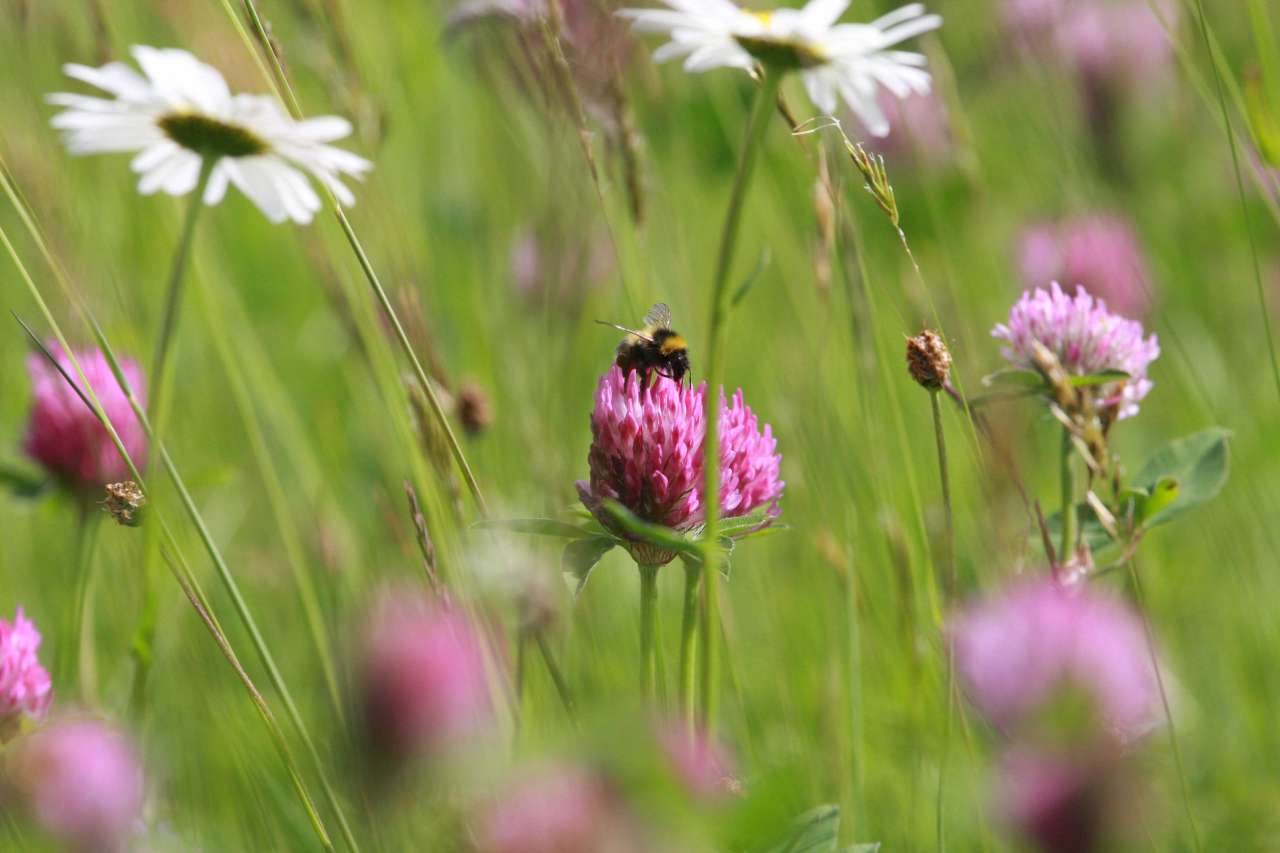
Different pollinators prefer different plants. Do you have any of the favourites in your garden? Photo: Anita Land
Bees, bumblebees, and hoverflies function as flying caretakers in both urban and rural areas. From spring to fall, they sip nectar from various flowers while carrying pollen from one bloom to another. But which flowers do the pollinators prefer?
Some pollinators, like small wild bees and hoverflies, have short tongues. Therefore, they prefer to drink nectar from open flowers with short corolla tubes, such as tormentil and bulbous buttercup. Many bumblebees have long tongues and prefer flowers with deep corolla tubes, such as red clover and white clover. And some flowers are more popular among pollinators because they have more pollen or nectar.
– In the project BE(E) DIVERSE, we have investigated how urbanization affects wild pollinators and plants in the city. The goal has been to provide a basis for better preservation of biodiversity in urban planning, says NIBIO researcher and project manager, Line Johansen.
– In this context, we have examined which plants wild bees and hoverflies prefer in semi-natural meadows and roadsides in Trondheim. It was clear from our recordings that pollinators have different preferences.
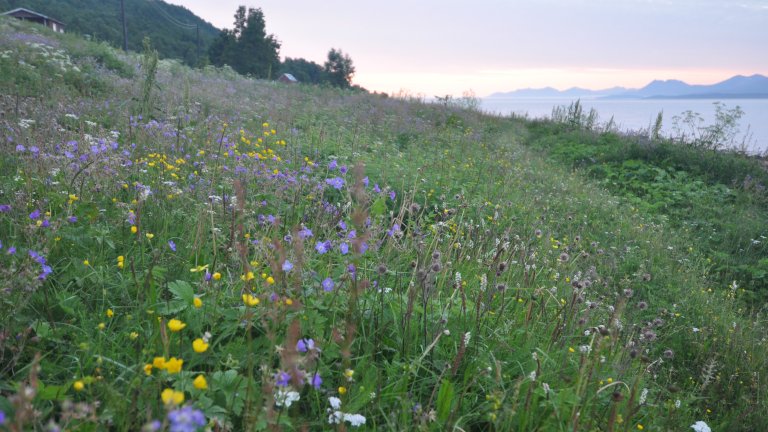
Common, but increasingly more rare
Researchers have highlighted ten plants that attract many pollinators. All these ten plants are commonly found throughout much of Norway. However, in the modern cultivated landscape, areas with a great diversity of flowers can be few and far between.
– This means it is important to preserve the flowers that already exist in the landscape while also creating more flower-rich areas, says Line Johansen.
– This can be done by maintaining the flower-rich areas in semi-natural meadows and roadsides. Or it can be as simple as not mowing flowering parts of the lawn – especially in cities where nature doesn't have much space.
The availability of flowers for pollinators in the cultivated landscape is being investigated in a new project called WINGS.
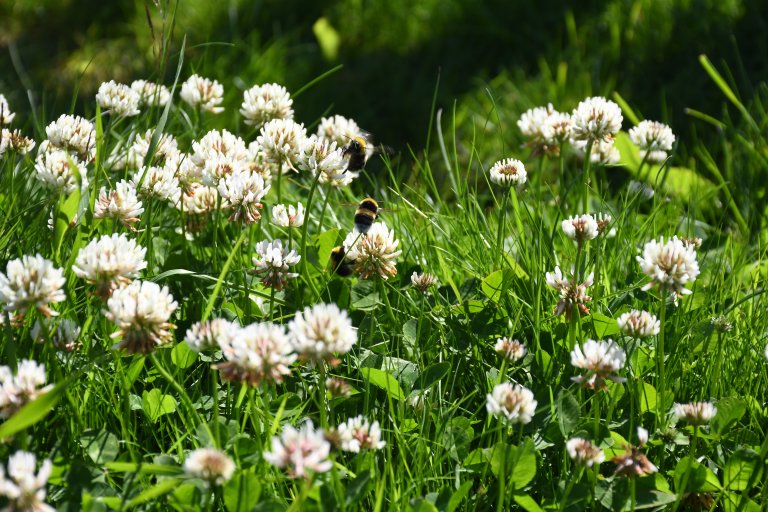
Top ten plants for pollinators:
Devil's-bit scabious (Succisa pratensis) blooms late in the season, at a time when many other plants have finished flowering. Consequently, it attracts numerous pollinators.
In addition to semi-natural meadows and roadsides, devil's-bit scabious grows in coastal heathland, open woodland, marshes, and coastal cliffs.
Devil's-bit scabious is particularly favoured by hoverflies, but bumblebees also visit it frequently.
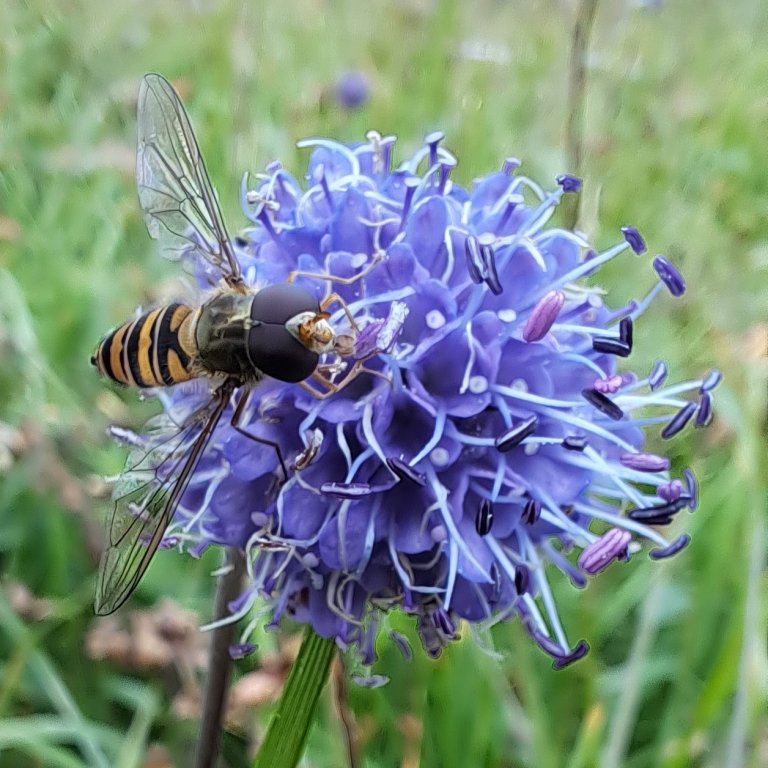
Bulbous buttercup (Ranunculus acris) blooms from May to September, providing food for pollinators throughout most of the growing season.
Bulbous buttercup has an open flower that is particularly attractive to hoverflies and other insects with short tongues.
Bulbous buttercup is common in semi-natural meadows, cultivated fields, roadsides, and open woodlands.
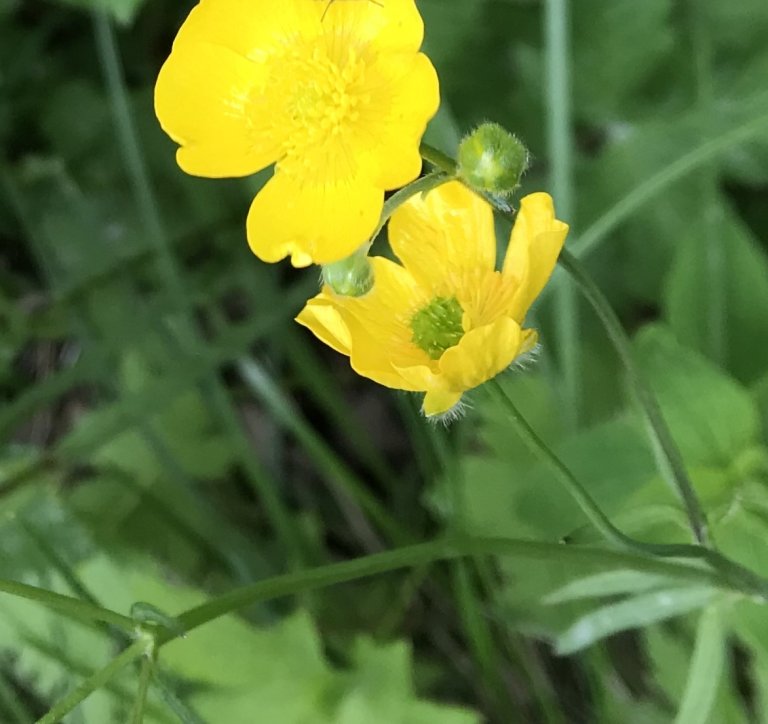
Square-stemmed St. John's wort (Hypericum maculatum) blooms from July to September.
It produces no nectar, yet it remains popular among hoverflies that collect pollen from the plant.
Square-stemmed St. John's wort grows in semi-natural meadows, roadsides, dry slopes, and forest edges.
_kvadrat.jpg)
Autumn hawkbit (Scorzoneroides autumnalis) blooms from July to October. It is highly favoured by both bees and hoverflies, especially late in the season when few other species are in bloom.
Autumn hawkbit has an open flower where nectar is readily accessible to pollinators.
Autumn hawkbit grows in semi-natural meadows, roadsides, forests, and coastal meadows.
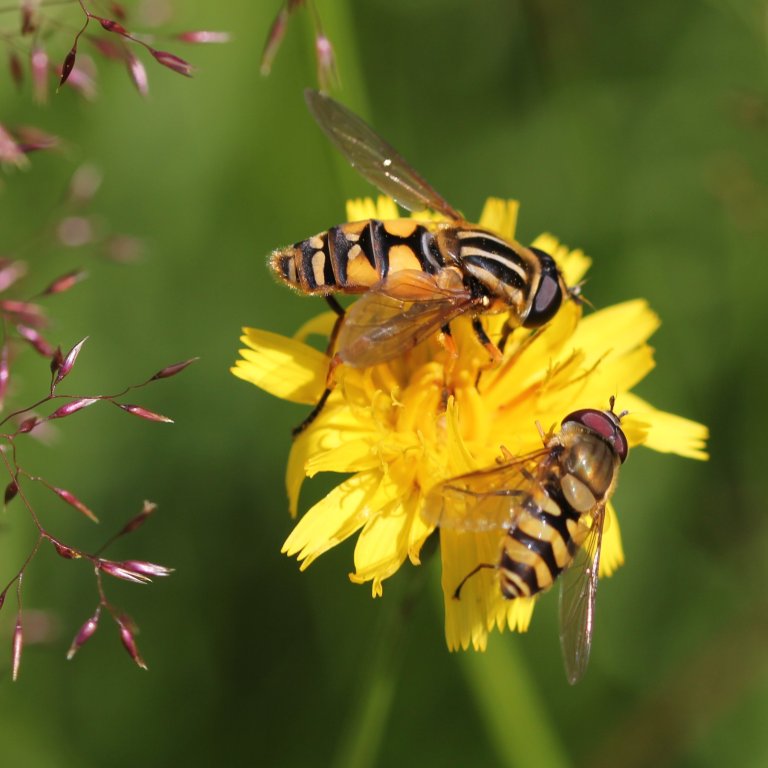
The grass starwort (Stellaria graminea) blooms from June to September. It can have many flowers in a small area.
The plant is slender and is therefore most often visited by small and light pollinators, such as hoverflies and other wild bees.
Grass starwort grows in semi-natural meadows, roadside edges, and forest edges. It can also be found in moderately fertilized meadows.
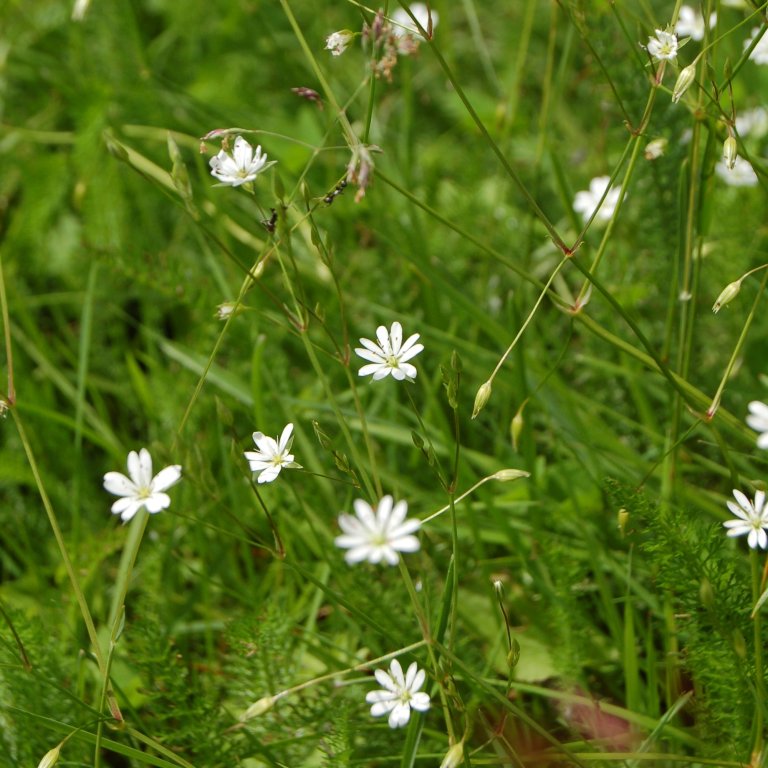
White clover (Trifolium repens) has a long flowering period from June to September, making it important for pollinators throughout the season.
White clover has flowers consisting of long corolla tubes where the nectar is collected at the bottom. Bumblebees, with their long tongues, are experts at reaching the nectar.
White clover grows in semi-natural meadows, cultivated fields, grazed forests, and roadside edges. The plant can be sown in both meadows and lawns.
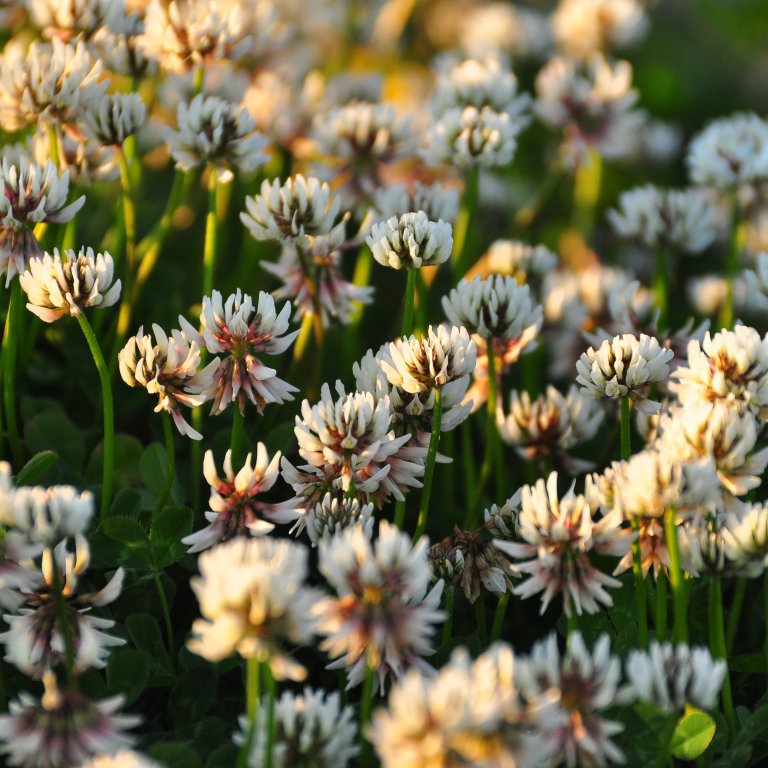
Red clover (Trifolium pratense) has a long flowering period from May to September, making it important for pollinators throughout the season.
Like white clover, the flowers of red clover have especially long corolla tubes where the nectar is collected at the bottom. It therefore often attracts bumblebees with the longest tongues, such as garden bumblebees.
Red clover grows in semi-natural meadows, cultivated fields, forest edges, and roadside edges. The plant is often sown in meadows.
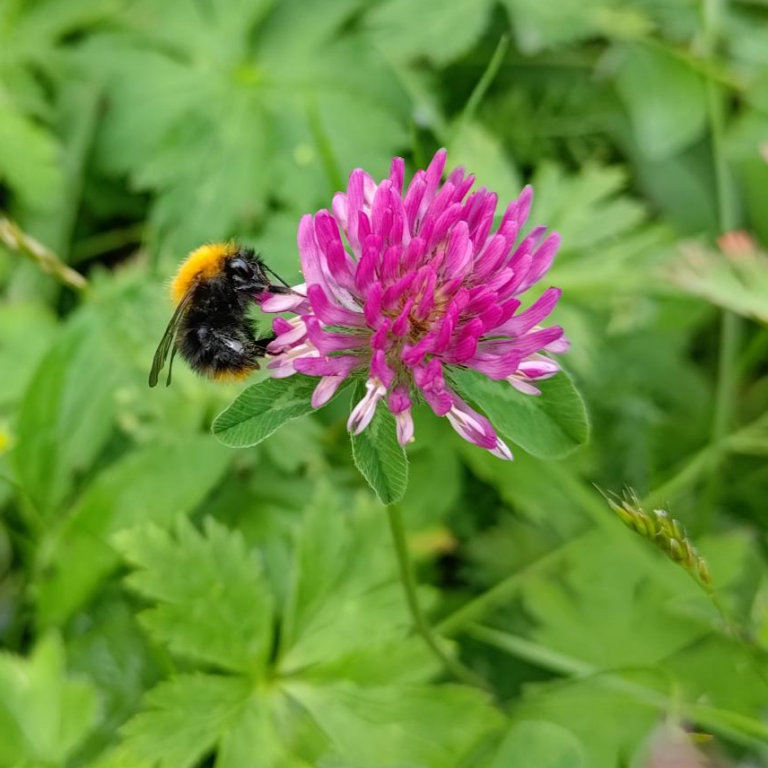
Field scabious (Knautia arvensis) blooms in the middle of summer, from the end of June until August.
Field scabious is especially popular among bumblebees as the plant has a large flower where several bumblebees can gather nectar and rest at the same time.
The plant is commonly found in semi-natural meadows, but it also grows on roadside edges and dry slopes.
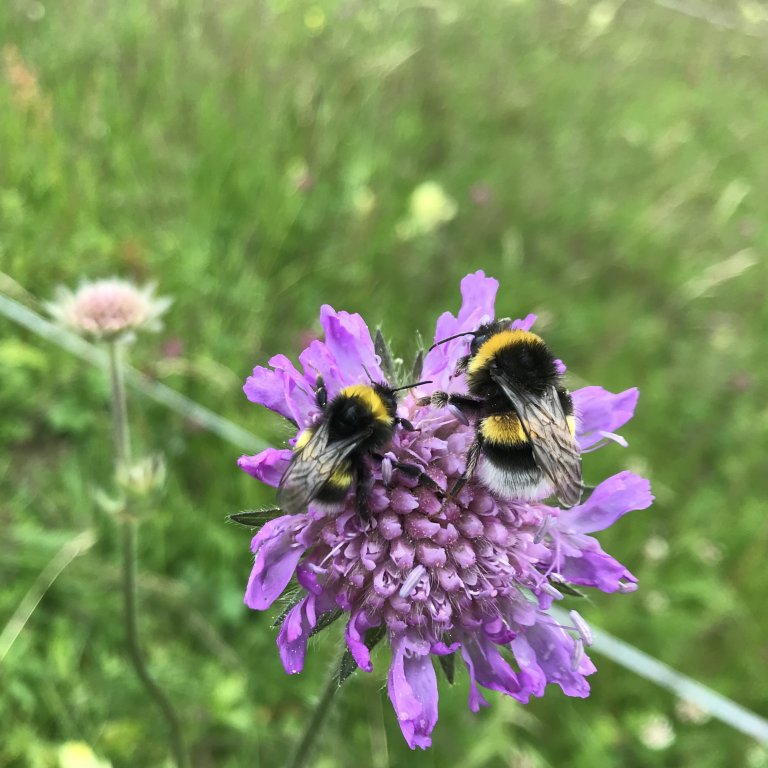
Wood cranesbill (Geranium sylvaticum) blooms from May to July. It is therefore an important resource for pollinators in the first part of the season.
The flower of the wood cranesbill is especially attractive to bumblebees but is also visited by hoverflies and some wild bees.
Wood cranesbill grows in semi-natural meadows, roadside edges, and forests.
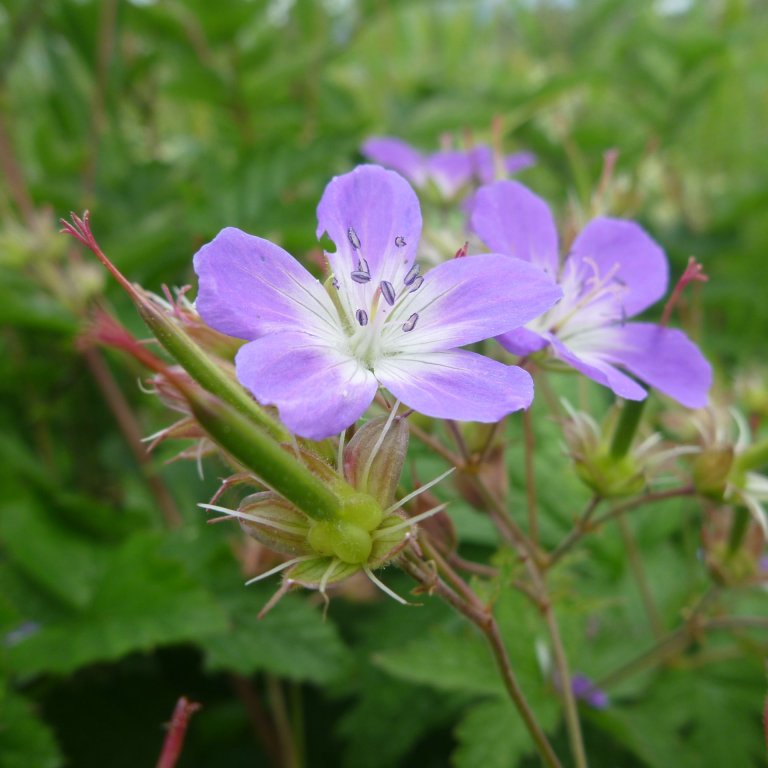
Tormentil (Potentilla erecta) blooms from June to August.
The plant has an open flower where the nectar is easily accessible for hoverflies and other small pollinators.
Tormentil grows in semi-natural meadows, heathlands, forests, and bogs.
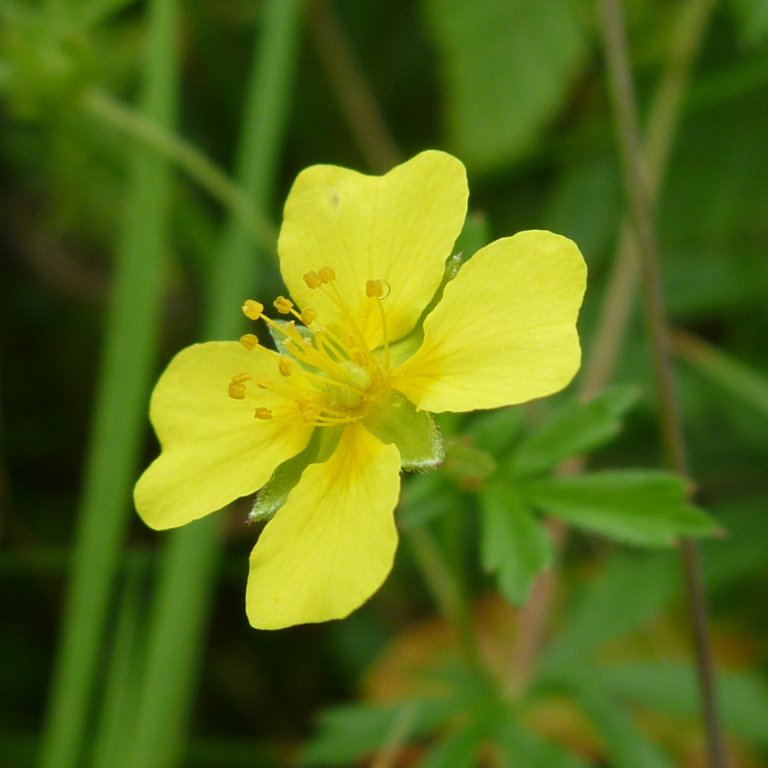
Contacts

Line Johansen
Research Scientist
-
Division of Food Production and Society
(+47) 908 47 904 line.johansen@nibio.no Office Location: Trondheim

Contacts

Line Johansen
Research Scientist
-
Division of Food Production and Society
(+47) 908 47 904 line.johansen@nibio.no Office Location: Trondheim
Projects
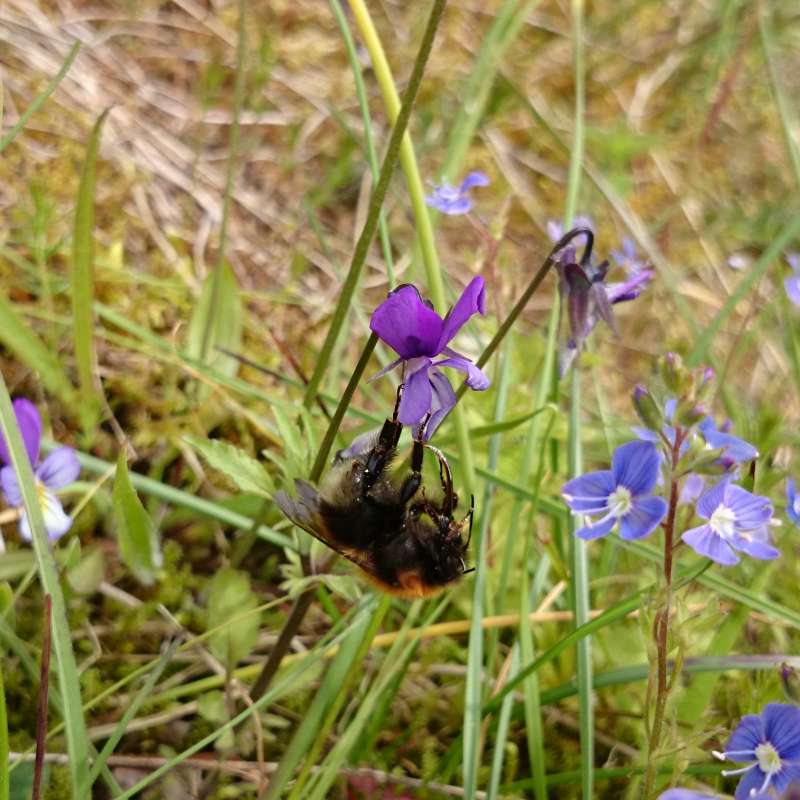
Division of Food Production and Society
BE(E) DIVERSE
The flowers and the bees - Solutions and tools for integrated sustainable planning to safeguard biodiversity in urban landscapes
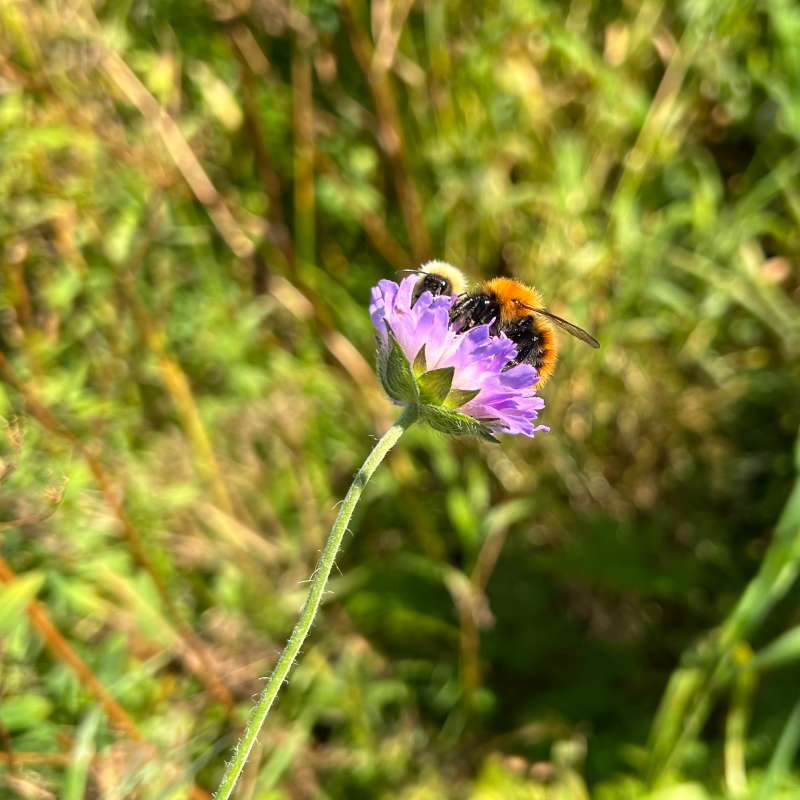
Division of Food Production and Society
WINGS - Pollinatorvennlige kulturlandskap: Løsninger for forvaltning av leveområder under press
Pollinatorene er truet. Dette får konsekvenser både for det biologiske mangfoldet og matsikkerheten vår. I WINGS skal vi utvikle løsninger for å etablere mer pollinatorvennlige kulturlandskap.
